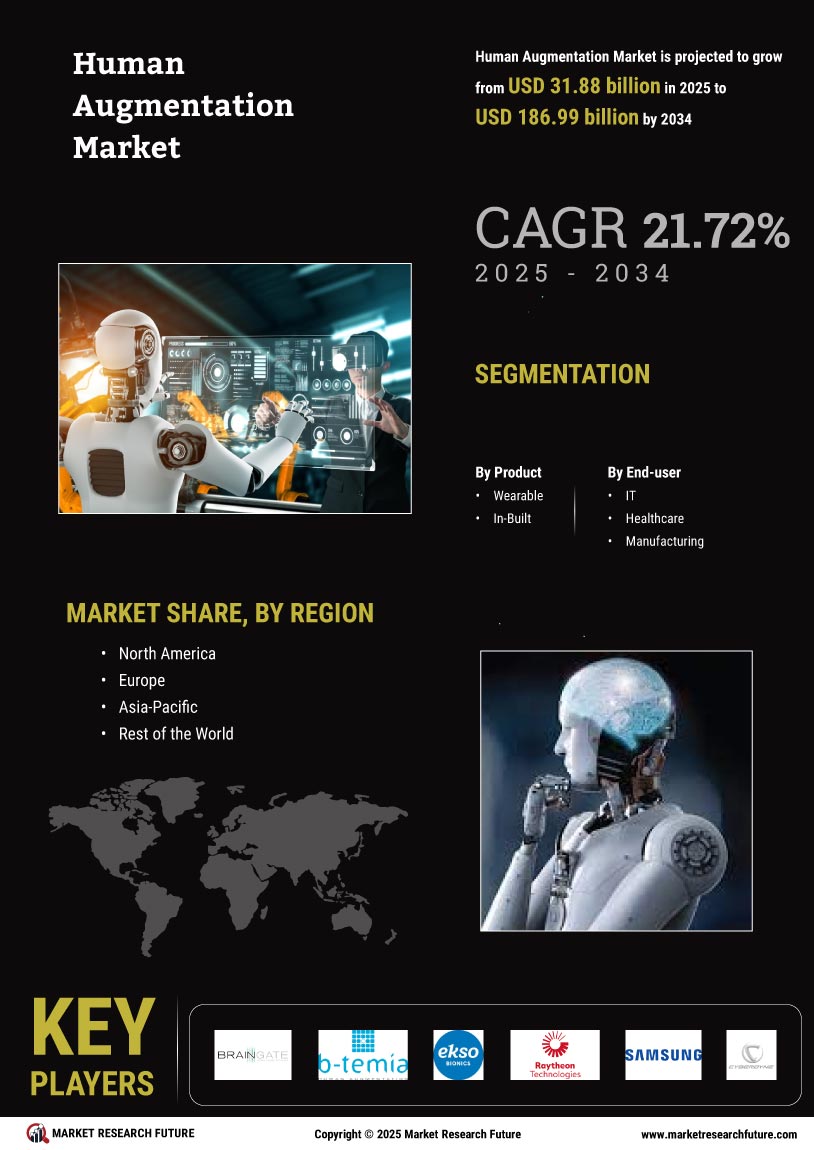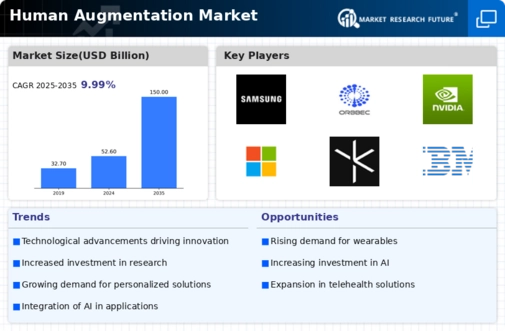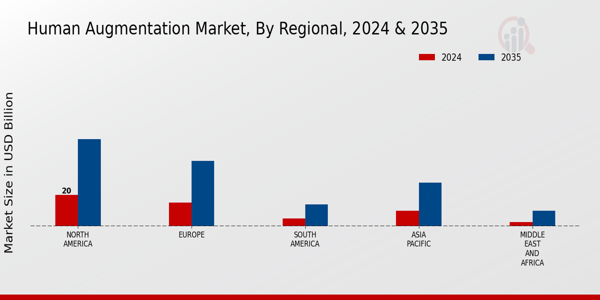Aging Population
The Global Human Augmentation Market Industry is significantly influenced by the increasing aging population worldwide. As individuals age, they often experience a decline in physical and cognitive abilities, leading to a growing demand for solutions that enhance their quality of life. Technologies such as assistive devices and cognitive enhancers are being developed to address these challenges. For example, smart home technologies can assist elderly individuals in maintaining independence. The market is projected to reach 150 USD Billion by 2035, driven by the need for innovative solutions that cater to the aging demographic, thereby highlighting the importance of human augmentation in enhancing life quality.
Workforce Enhancement
The Global Human Augmentation Market Industry is driven by the need for workforce enhancement in an increasingly competitive global economy. Organizations are seeking ways to improve employee productivity and efficiency through human augmentation technologies. For instance, companies are implementing augmented reality training programs to enhance skill acquisition and retention among workers. This trend is indicative of a broader shift towards integrating technology into the workplace, which is expected to contribute to the market's growth. As businesses recognize the value of augmenting human capabilities, the Global Human Augmentation Market is poised for expansion, aligning with the evolving demands of the labor market.
Healthcare Sector Growth
The Global Human Augmentation Market Industry is experiencing substantial growth within the healthcare sector, where human augmentation technologies are being increasingly integrated into medical practices. Innovations such as telemedicine, robotic surgery, and augmented reality are transforming patient care and surgical procedures. For instance, augmented reality is being utilized in surgical training, allowing for enhanced visualization and precision. This integration is expected to drive market growth, with a compound annual growth rate of 9.99% projected from 2025 to 2035. As healthcare systems continue to adopt these technologies, the Global Human Augmentation Market will likely expand, improving patient outcomes and operational efficiency.
Market Growth Projections
Technological Advancements
The Global Human Augmentation Market Industry is propelled by rapid technological advancements in fields such as robotics, artificial intelligence, and biotechnology. Innovations in wearable devices and exoskeletons enhance physical capabilities, enabling individuals to perform tasks beyond their natural limitations. For instance, companies are developing smart prosthetics that integrate with neural signals, allowing for more intuitive control. This technological evolution is expected to contribute to the market's growth, with projections indicating a market value of 52.6 USD Billion in 2024. As these technologies become more accessible, they are likely to reshape industries, including healthcare and manufacturing, thereby expanding the Global Human Augmentation Market.
Increased Investment in R&D
The Global Human Augmentation Market Industry is benefiting from increased investment in research and development across various sectors. Governments and private entities are allocating substantial resources to explore innovative human augmentation solutions, recognizing their potential to enhance productivity and quality of life. For example, funding initiatives aimed at developing advanced prosthetics and cognitive enhancement technologies are on the rise. This influx of investment is likely to accelerate the pace of innovation, leading to the introduction of new products and services. As a result, the market is expected to grow significantly, reflecting the commitment to advancing human capabilities through technology.























